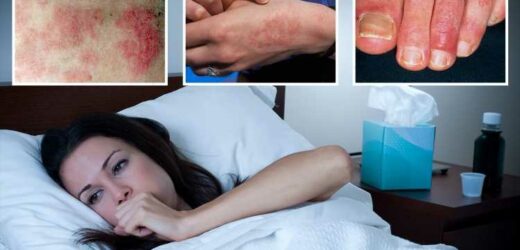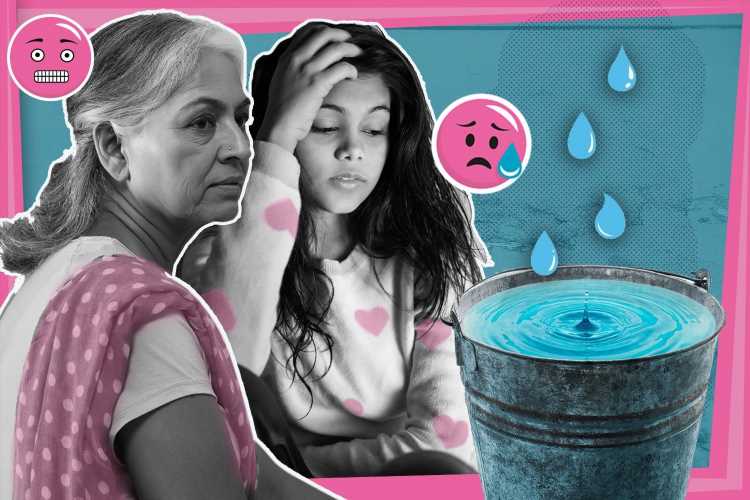MOST Brits are now familiar with Omicron, and if you haven't already had it, it's likely you'll know someone who has.
Signs are a little bit different with the milder variant and most people have reported suffering with cold-like symptoms – but some have also reported skin rashes.
While the NHS still lists a new persistent cough, a high temperature and a loss of taste and smell as the main symptoms of Covid-19, experts say you should also look out for skin rashes.
A string of hugely positive studies show Omicron IS milder than other strains, with the first official UK report revealing the risk of hospitalisation is 50 to 70 per cent lower than with Delta.
Covid booster jabs protect against Omicron and offer the best chance to get through the pandemic, health officials have repeatedly said.
The Sun's Jabs Army campaign is helping get the vital extra vaccines in Brits' arms to ward off the need for any new restrictions.
According to the ZOE Covid Symptom Study App, people who have caught the variant say they experience skin rashes.
Here are the three types of rashes that Brits are reporting.
Most read in Health
ALL CHANGE The major change to Covid rules from TOMORROW – everything you can and can’t do
I thought back pain was a trapped nerve – but was left unable to walk, says mum
The little known sign of Omicron you might mistake for food poisoning
I used to struggle to sleep but frozen pea hack changed my life
Hives
People reporting this rash say that it often comes on suddenly.
🔵 Follow our Covid live blog for all the latest updates
It can show up in the form of raised bumps and is very itchy – it can often start with intense itchy palms or soles.
Infections, such as a virus like Covid can cause hives in some people, and are more common in children.
It's key to know though that a variety of infections, including the common cold, can prompt hives.
If you have any doubt about your symptoms then it's best to take a coronavirus test which will help you establish whether or not you need to isolate.
Prickly heat
The second is more like a prickly heat rash that pops up all over the body, although more common on the elbows, knees and the backs of hands and feet.
A GP in London previously warned that kids with Omicron had presented with rashes, but it hadn't been seen as prevalent in adults until recently.
Dr David Lloyd said he had seen about 15 per cent of youngsters with confirmed Omicron cases developing spots.
They also suffered with fatigue, headaches and a loss of appetite – which seems to fit with the most common variant symptoms reported so far in adults.
Chilblains
The last condition related to the skin is a rash similar to chilblain.
Some patients have reported sore patches which look purple or red and stick out above the skin.
read more on the sun
YOU'RE A SHAMBLES Dear Boris, fix things or admit being PM is too much for you, Yours Piers
Djokovic chaos as cops pepper-spray fans swarming car after arrest claim
Inside Prince Andrew's £17m Swiss chalet with seven bedrooms and indoor pool
The ten diet rules you should IGNORE if you want to lose weight
Chilblains look similar to Covid toes – which have been a long reported symptom of people contracting other variants of Covid-19.
It seems to be that anyone of any age can get Covid toes.
Although in reports it seems children and teens suffer more with the condition.
It can present as red, inflamed toes sometimes with a rash.
Data from the app shows people who catch the Omicron variant usually present with symptoms within 48 hours of catching the bug.
These include a runny nose, dry/scratchy throat, headache, fatigue and sneezing.
Lower back pain, muscle aches and night sweats are also key symptoms, and the lead on the study, King's College London's Professor Tim Spector, said people need to be aware that this has turned into a more 'cold-like' illness.
Experts at ZOE had previously compiled a list of the top 21 Covid symptoms – which rashes coming in at number 10.
As variants have progressed and changed this list has also changed, and the top symptoms to look out for are currently listed as:
- runny nose
- headache
- sneezing
- sore throat
- persistent cough
- fatigue
- loss of taste and smell
Source: Read Full Article












